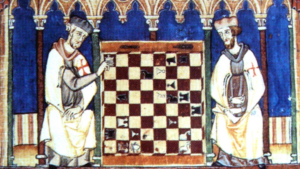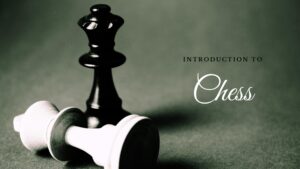In the sweltering summer of 1972, Reykjavik, the capital of Iceland, transformed into the center of a global drama. But this wasn’t a political summit or a military standoff — it was a chess match. On one side sat Bobby Fischer, the unpredictable genius from Brooklyn. Opposite him was Boris Spassky, the calm, calculating Soviet world champion. What unfolded over the next two months wasn’t just a series of chess games. It became a symbolic battle of ideologies, a high-stakes scandal, and one of the most captivating moments in the history of chess. Let’s understand Bobby Fischer vs Boris Spassky 1972
Why 1972 Mattered So Much
To understand the magnitude of this match, you have to consider the backdrop. The world was neck-deep in the Cold War. The U.S. and the Soviet Union were in constant rivalry — in arms, space, and even sport. But chess? Chess was the Soviets’ territory. They had dominated the World Chess Championship since 1948. To them, it wasn’t just a game — it was proof of their intellectual superiority.
And then came Bobby Fischer.

Who Was Bobby Fischer?
Bobby Fischer wasn’t your average prodigy. He was an intense, solitary figure who taught himself to play chess at age 6 and became a grandmaster at 15. His brilliance on the board was unmatched, but his behavior off the board was erratic, demanding, and often troubling. By 1972, he had already left a trail of resignations, refusals, and controversies. Yet he was also winning — ruthlessly and consistently.
Fischer had just crushed grandmasters like Tigran Petrosian and Bent Larsen with wide margins. By the time he challenged Spassky, it felt like he was not just coming for the crown — he was coming for the entire Soviet system.
Best Online Chess Academy in India – kingdomofchess.com
The Build-Up to the Scandal
When Fischer accepted the challenge to play Spassky, the world held its breath. But almost immediately, chaos began.
Fischer delayed his arrival to Reykjavik, demanding more prize money and better conditions. He accused organizers of everything from poor lighting to bad cameras. At one point, it seemed like the entire event would be canceled. Henry Kissinger, the U.S. Secretary of State, even made a call urging Fischer to play — not for himself, but “for America.”
Fischer finally showed up — late, tense, and angry. And that’s when the real scandal began.
Game 1: The Strange Sacrifice
In Game 1, Fischer made a bizarre decision. He captured a pawn on the edge of the board — a move commentators described as “unthinkable” at that level. Spassky calmly exploited the blunder and won.
Then came Game 2, and things really blew up.
Fischer refused to play in front of cameras, claiming they were distracting. The organizers refused. Fischer didn’t show up. He forfeited the game.
At that point, everyone believed the match was over. A forfeit? In a World Championship? This was unprecedented.
The Turning Point: Game 3 and Beyond
Somehow, after intense negotiations, a compromise was reached. The cameras were moved further back, and Game 3 was played in a small back room, away from the main stage. Fischer won, and with it, something shifted. He began a remarkable streak, winning game after game with breathtaking brilliance.
Spassky was stunned. Not just by the quality of play — but by the constant paranoia and disruption. Fischer demanded changes to the lighting, accused the Soviets of using electronic devices, and even had the chairs X-rayed for hidden transmitters.
Spassky himself started becoming paranoid. After one game, he requested that the lights be checked for chemical substances. The match had now become more than just chess — it was a psychological war, and Fischer was winning it both on and off the board.
Was It All a Mind Game?
Many analysts now believe Fischer’s antics weren’t just random tantrums. They were a strategy. He wanted to throw Spassky off balance, disrupt his rhythm, and create chaos. It worked. Spassky, known for his composure, started making uncharacteristic mistakes.
Game after game, Fischer’s dominance grew. He played daring, aggressive lines. He found moves no one had seen before. Commentators were stunned. The man who had once forfeited a game was now dismantling the reigning champion.
The Legacy of the 1972 Scandal
Fischer eventually won the match 12.5 to 8.5, becoming the first American world chess champion. It was a victory that shocked the world — not just because of his win, but because of how he won.
But perhaps more importantly, the match:
- Brought chess into the mainstream. For a brief moment, chess was front-page news around the world.
- Symbolized Cold War tensions, with every pawn move carrying political weight.
- Exposed the psychological gamesmanship that exists at the highest levels of sport.
Yet, in true Fischer style, he never defended his title. In 1975, he refused to play Anatoly Karpov, arguing with FIDE (the chess federation) over format and rules. He was stripped of the title and disappeared from public life.
A Final Thought: Genius or Madness?
The Fischer vs. Spassky match remains one of the most talked-about scandals in sports history — not because of cheating or corruption, but because of one man’s refusal to play by the rules of the world around him.
Was Bobby Fischer a genius driven by vision, or a man consumed by paranoia? Maybe both.
What’s certain is that in 1972, Bobby Fischer didn’t just win a title. He rewrote the story of chess, transformed it from a quiet intellectual pursuit into a global spectacle, and in the process, gave the world a timeless tale of brilliance, controversy, and Cold War drama.






